I wrote this post in English and Slovak language.
Hi.
It's spring, everything is coming to life and I'm drawn to a trip somewhere. It's not that I haven't been anywhere in winter, but this time I'm not planning to go on a trip to nature, but to look around a bit at historical monuments in the wider area. My friends and I agreed to take a trip to Solivar in Prešov. I have already been to the salt mines in Bochnia and Wieliczka, so I can consider this trip as a free continuation of trips to salt cities. It follows that in this article I will guide you through the production of salt in the past.
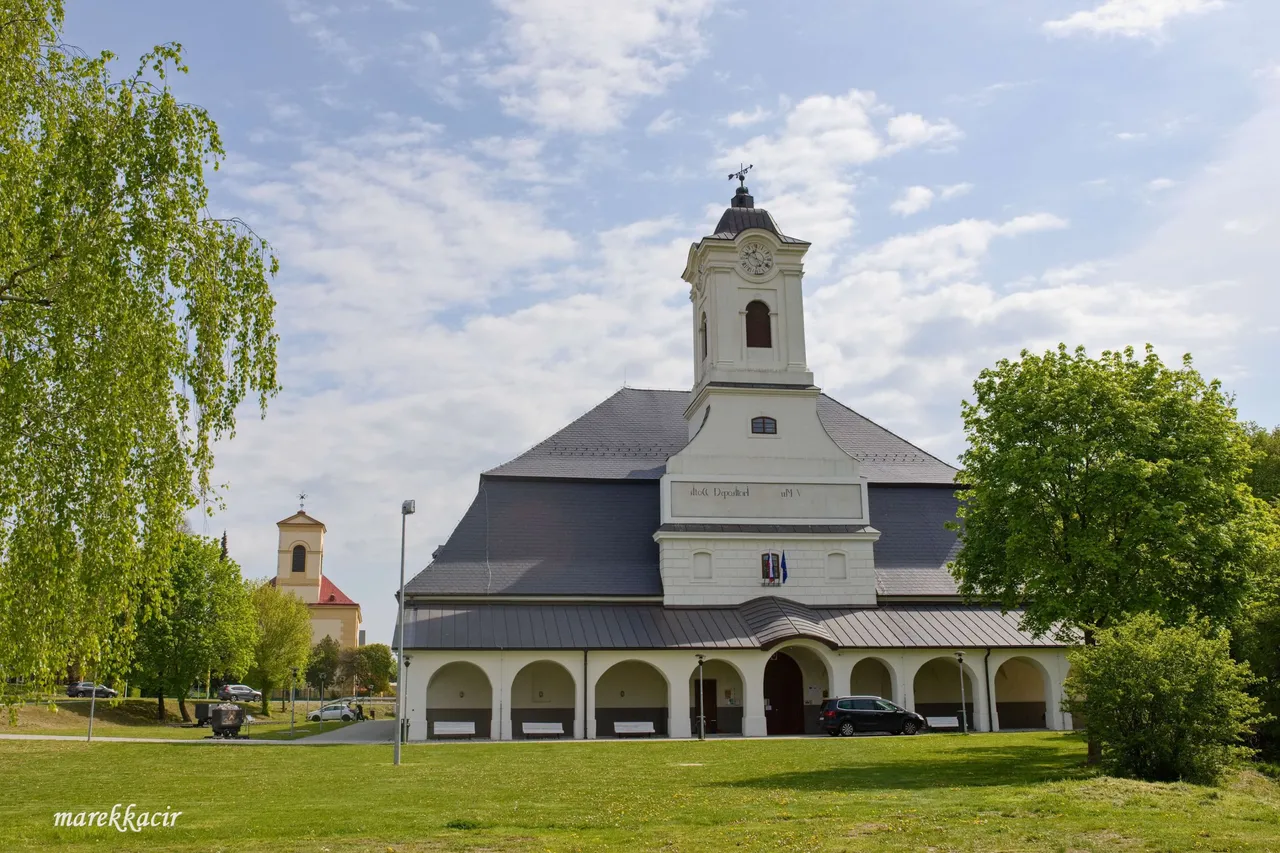
We have an hour's drive to Solivar. We get into the car and before we know it, we are there. We passed through the city of Prešov and arrived in the local part of the city. We parked in a small parking lot and enter a large, spacious building. On the gate is written museum and opening hours and announcements are posted on it. I was a little cold when I read that it is closed today. Fortunately, this only applies to the afternoon hours. A little while later we found out why. Inside, this building seems even more spacious than from the outside. No wonder everyone is getting ready for the wedding here.
However, we go to buy tickets and wait for the guide. Although I have to admit that I would really like a good cake.
Solivar in Prešov is one of the most important technical monuments in Slovakia. It is a complex of technical facilities for pumping salt from the 17th century. That's enough to say. We found out that it is a complex of buildings at the very beginning when the guide took us out of the building and out onto the street.

After a short walk, we arrived in front of the Leopold shaft. They started digging the shaft in 1571 and it is 155 meters deep. And how did people at that time find out that there was salt under their feet? At that time, there were no drilling and exploration machines like there are now. The salt here literally flowed to the surface by itself. And so, on the instructions of the monarch, salt mining began in Prešov.
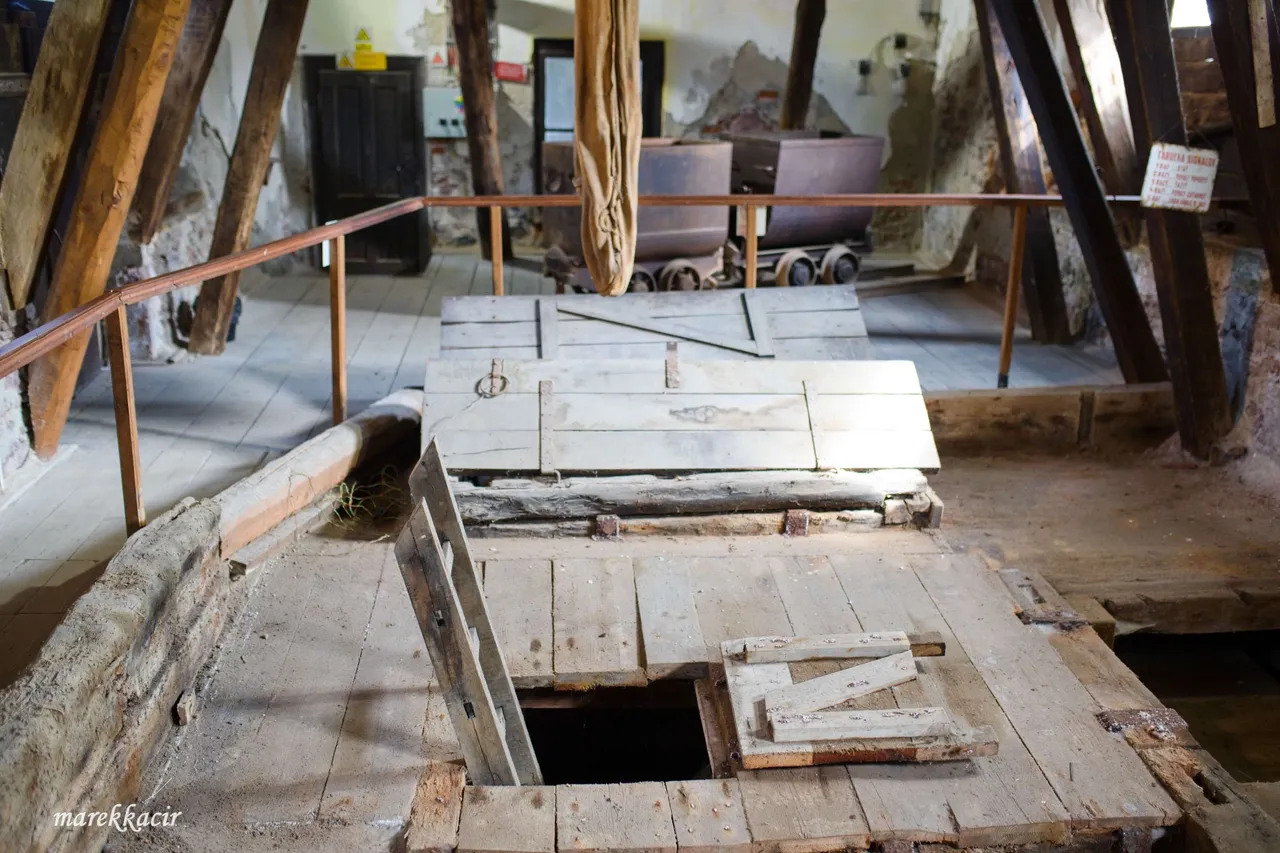
Rock salt was not mined from the ground, as in the aforementioned mines in Poland. Brine was mined here. The shaft was filled with water, salt was dissolved in it, and with the help of a large moss, which had a volume of 5-7 hectoliters, it was pulled to the surface.
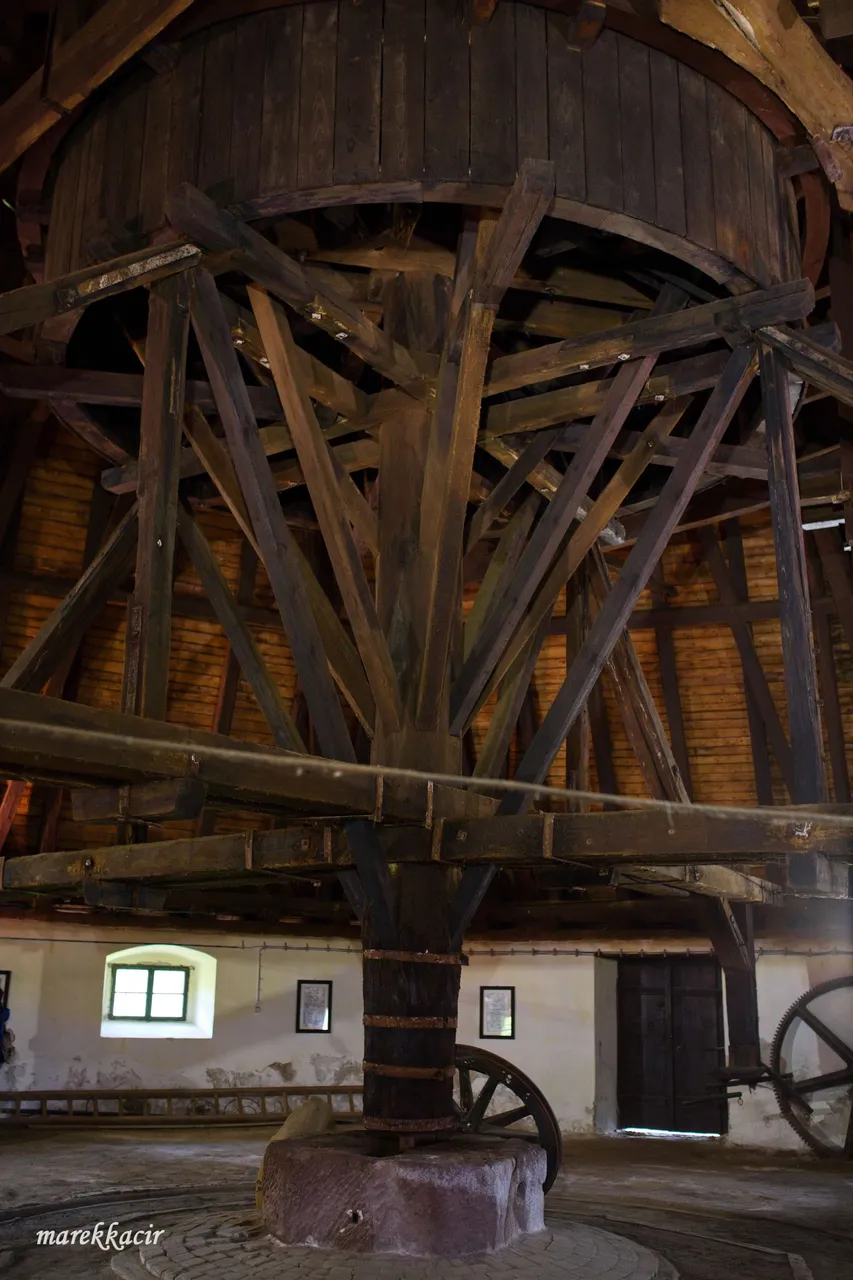
In 1674, a gable building was built over the Leopold shaft. With this mechanism, the brine was pulled up from the shaft. The mechanism was driven by four horses. After a few hours of work, they were replaced by another four horses, and it went on like this day after day. The mechanism was made of high-quality wood that grew in the surrounding forests. The guide told us that wood from the vicinity of Prešov was even used in the construction of the ships on which Christopher Columbus sailed.
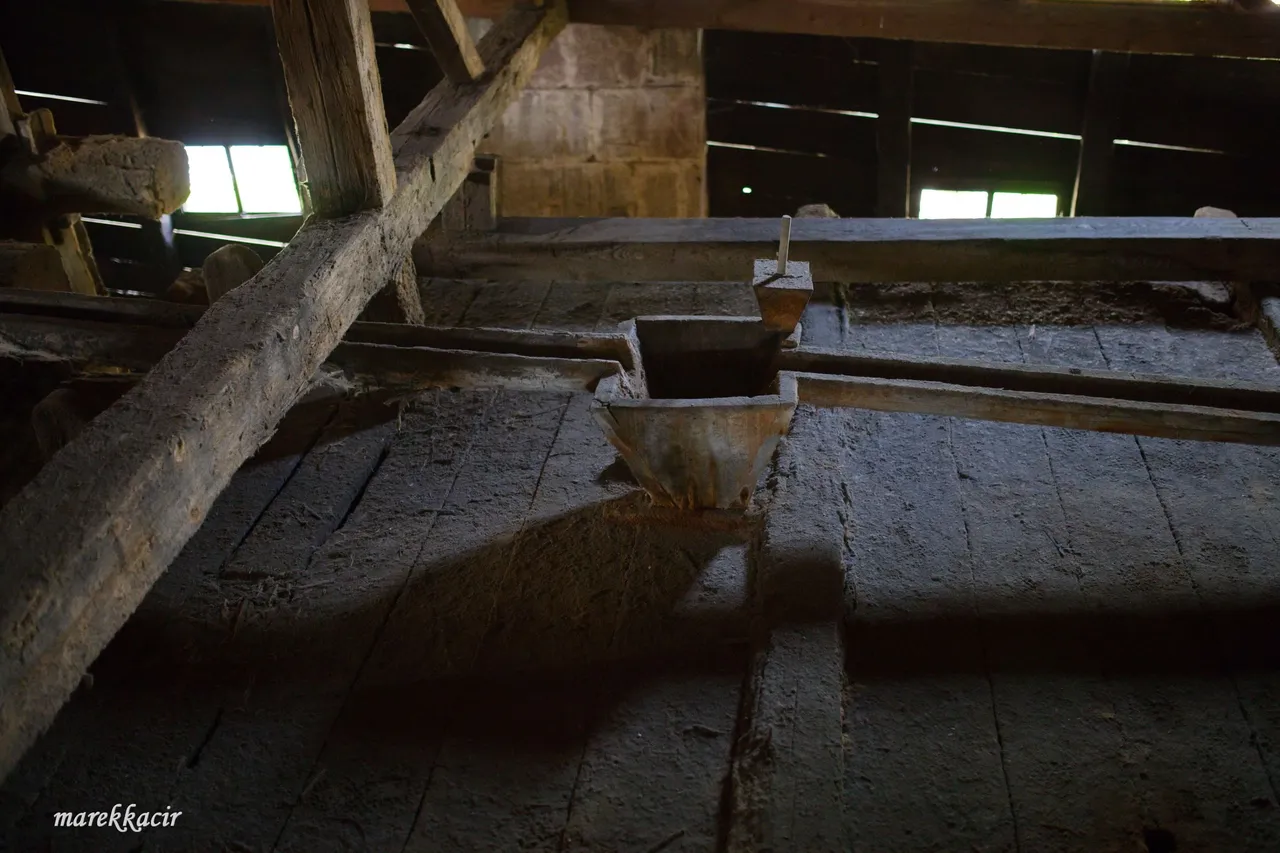
The shaft was located at the highest point in the area. The brine that reached the surface flowed using a wooden pipe into storage tanks that were built in 1815.
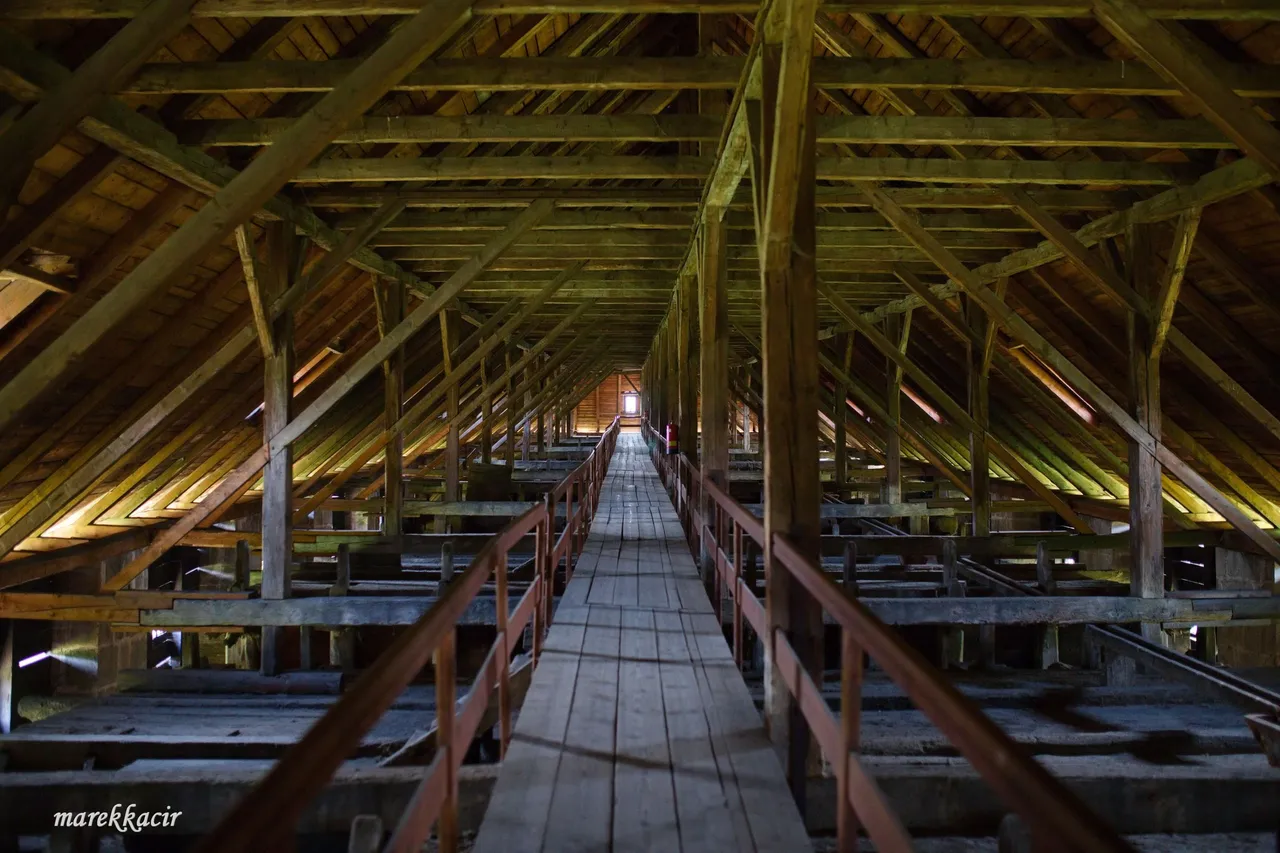
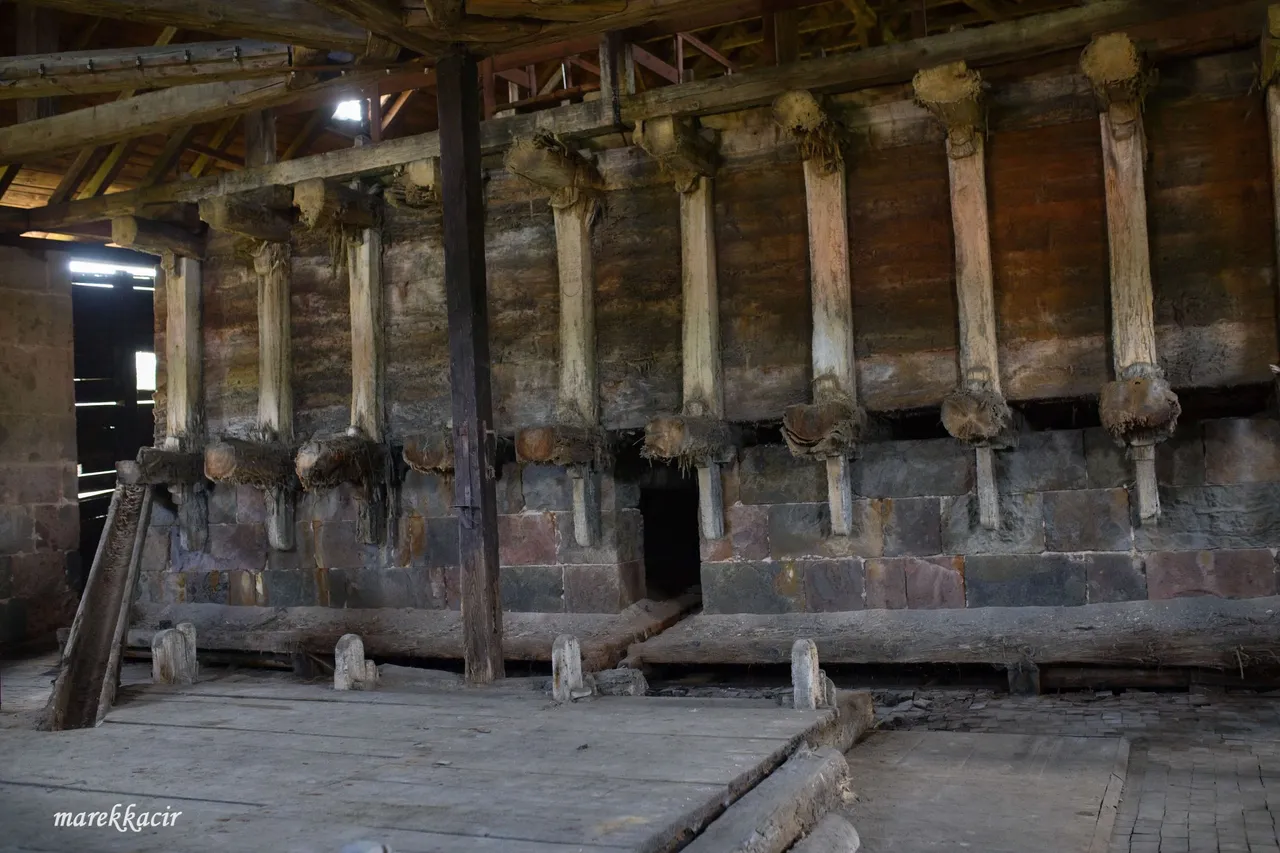
There are 8 wooden storage tanks in the building. Each one has a volume of 1320 hectoliters.
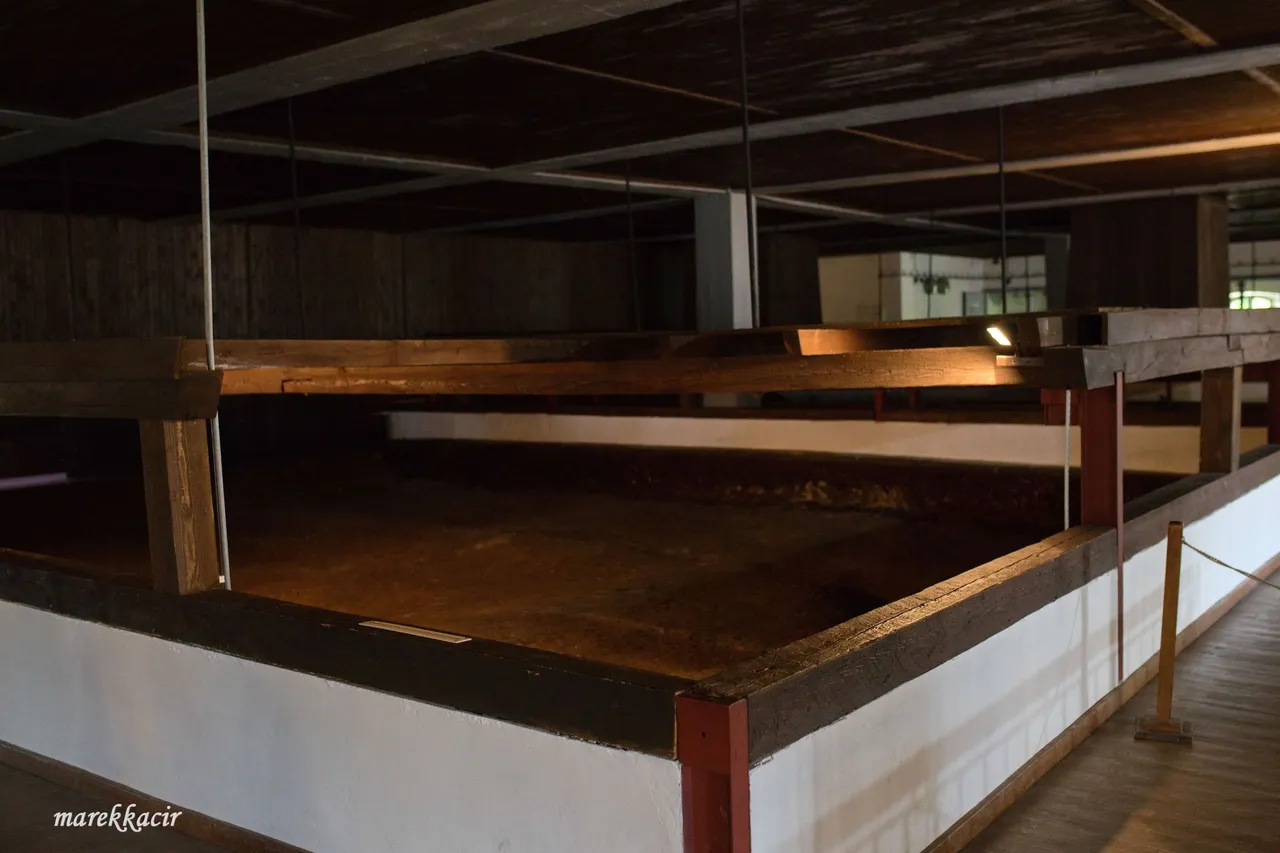
The brine was then fed through a wooden pipe to the preheating and then to the evaporation pan. On the ground floor of the building there are furnaces that continuously heated the brine that was located above them. After evaporation, the crystalline salt was dug up and transferred to the gutter chambers, where it remained for 24 hours.

Working in this environment was extremely difficult. The salt had an aggressive effect on the respiratory tract, so the workers who worked here could go to the nearby pubs and get a dozen beers for free every month. Pretty poor compensation for ruined health, but I believe that at that time people were also grateful for this.
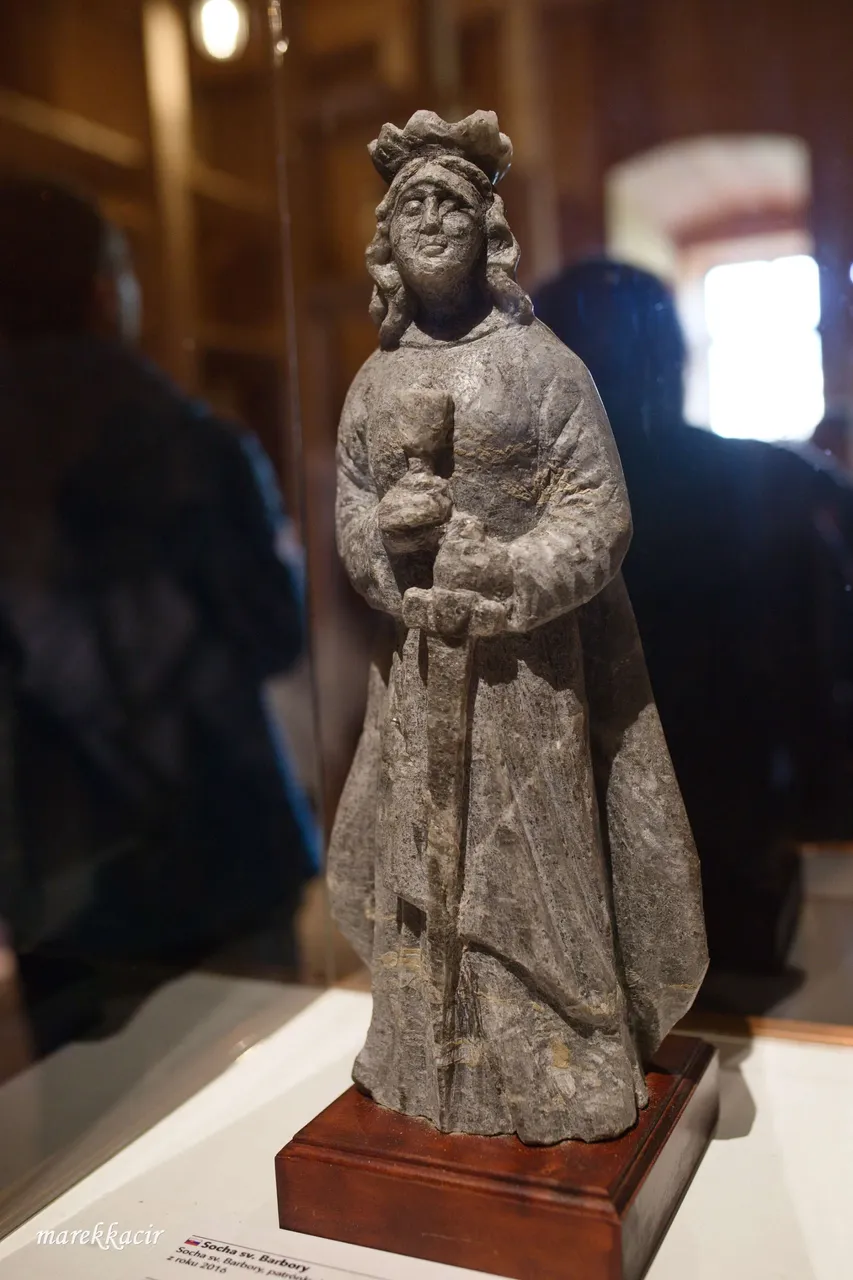
As I learned, workers were not paid wages as we know them today. They received food and clothing for their work. Men worked in Solivara and women took care of the household and children. In addition, skilled women engaged in manual work, for example lacemaking. They were able to earn some extra money by selling lace.
After drying, the salt was moved using a rail and small carts to the salt storage. This is actually the first building that we visited in the area and in which the wedding will take place. Here, the salt was poured into barrels and transported around the estate using wagons and horses.
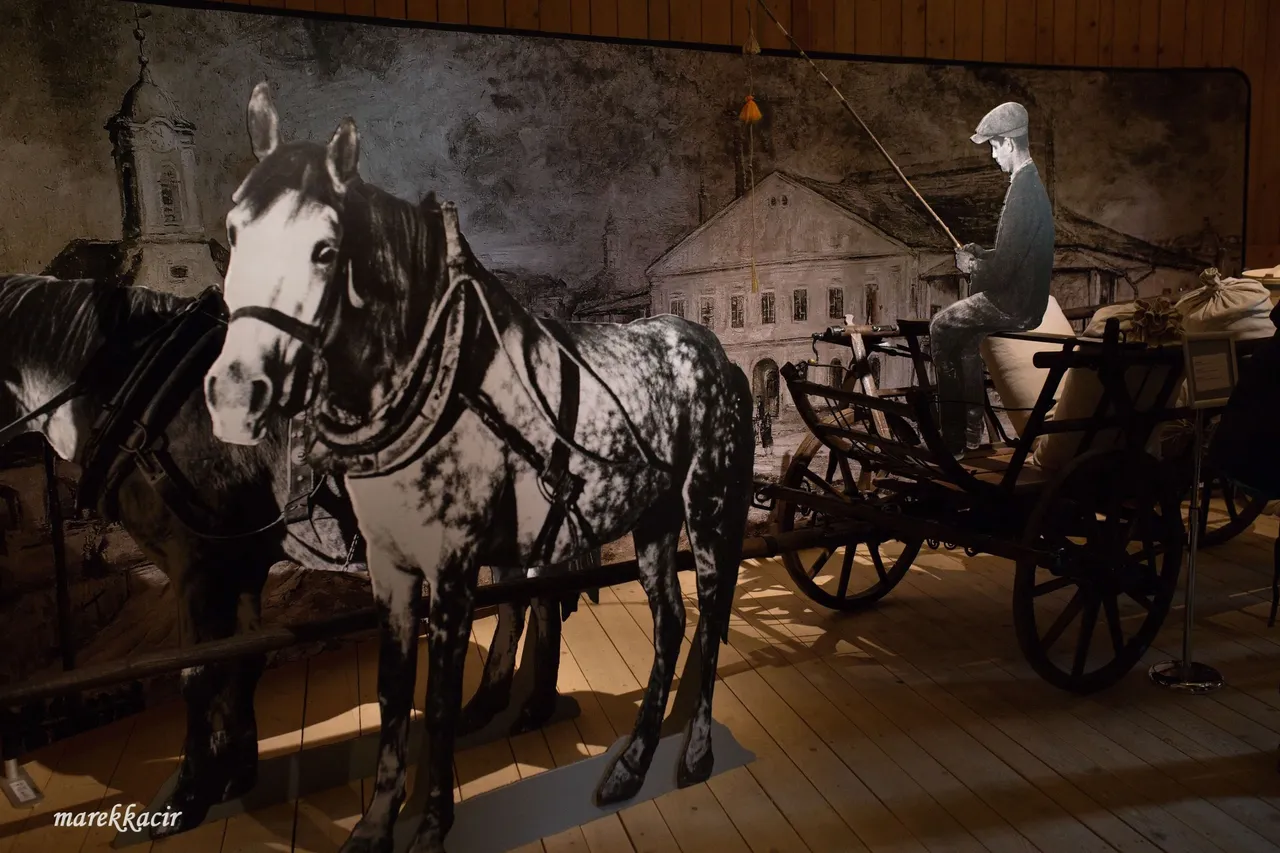
The cargo of salt was specially guarded and the wagons that carried the salt were guarded by the royal guard. Stealing the king's salt was severely punished by cutting off the horns.
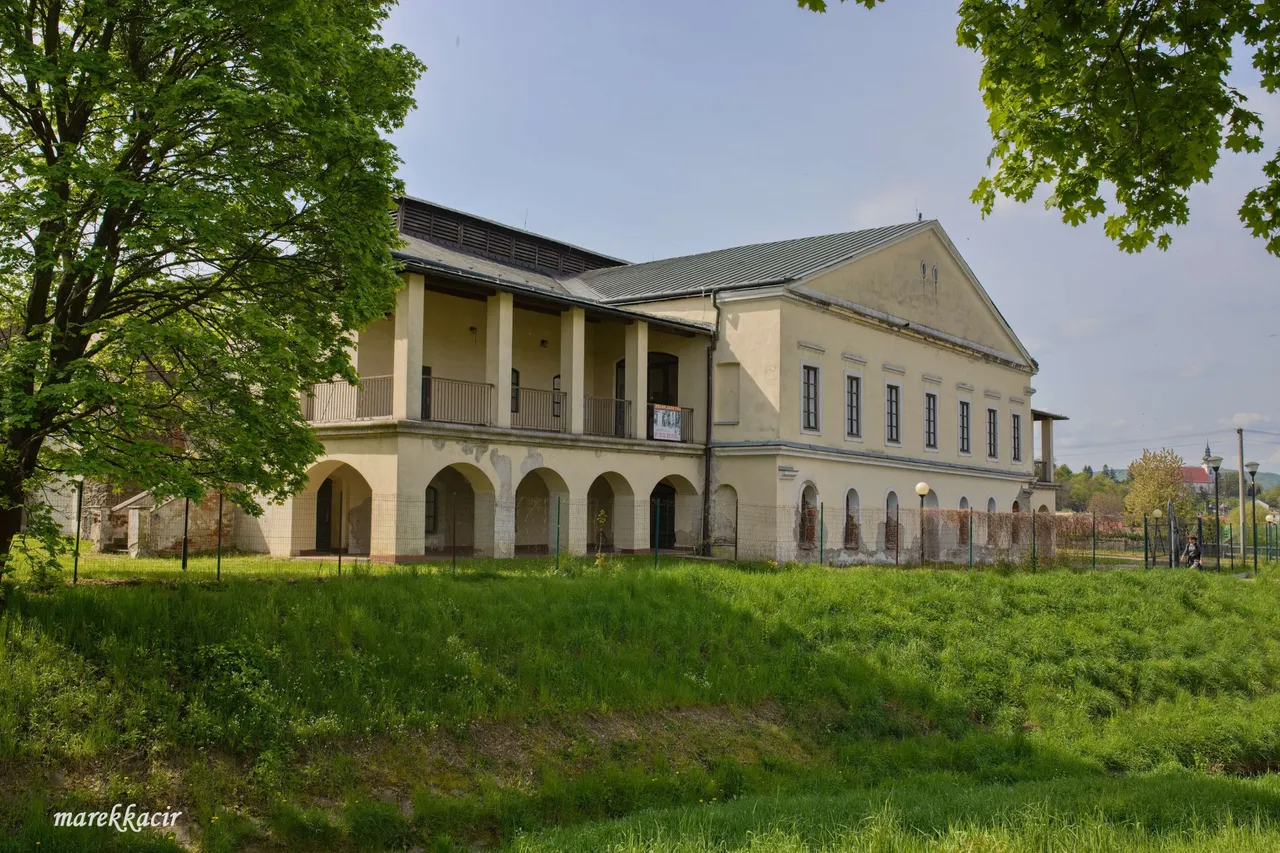
In addition, there were several technical buildings in the area. There is also a chapel and a knocker. It notified workers and miners of the start of work or extraordinary events such as fires or natural disasters.
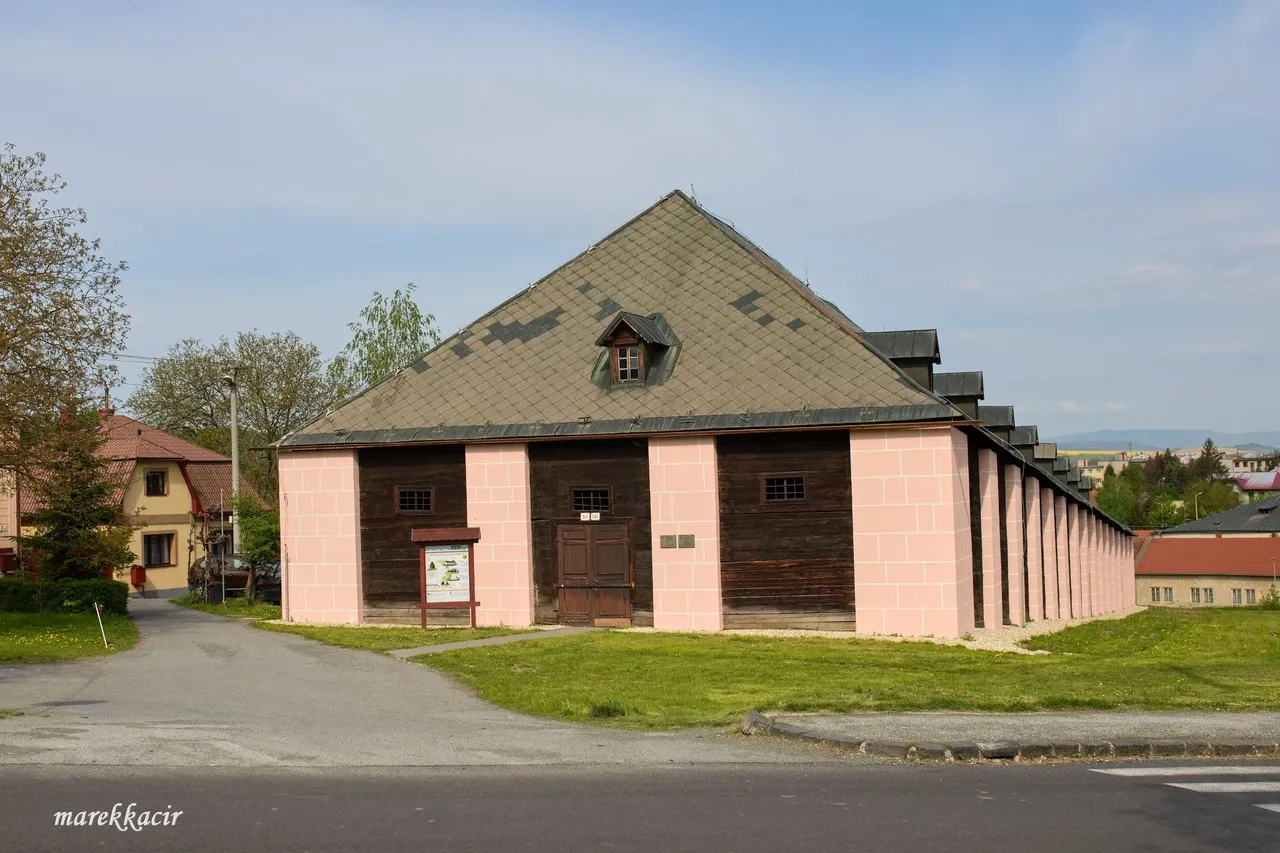
I have to admit that I had no idea what a gem is here in Prešov. We learned a lot of interesting things by visiting this technical monument. I am returning home a little richer from this trip.
Thank you
Ahoj.
Je jar, všetko sa prebúdza k životu a mňa to ťahá niekde na výlet. Nie že by som v zime nikde nebol, ale tento krát sa neplánujem vybrať na výlet do prírody, ale poobzerať sa trochu po historických pamiatkach v širšom okolí. S kamarátmi sme sa dohodli, že si urobíme výlet do Solivaru v Prešove. Bol som už v soľných baniach v Bochnii aj Wieliczke, tak tento výlet môžem považovať za voľné pokračovanie výletov po soľných mestách. Z toho vyplýva, že vás v tomto článku prevediem výrobou soli v minulosti.

Do Solivaru to máme hodinku cesty. Nasadáme do auta a ani sa nenazdáme a sme na mieste. Prešli sme cez mesto Prešov a prišli do miestnej časti mesta. Zaparkovali sme na malom parkovisku a vchádzame do veľkej, priestrannej budovy. Na bráne je nápis múzeum a sú na nej vyvesené otváracie hodiny a oznamy. Trochu ma zmrazilo keď som si prečítal že dnes je zatvorené. Našťastie to platí až pre popoludňajšie hodiny. O malú chvíľu sme sa dozvedeli prečo. Vo vnútri táto budova pôsobí hádam ešte priestrannejšie ako z vonku. Niet divu, že sa tu všetci pripravujú na svadbu.
My si však ideme kúpiť lístky a čakáme na sprievodcu. Aj keď musím priznať, že dobrý koláč by som si veru dal.
Solivar v Prešove patrí medzi najvýznamnejšie technické pamiatky Slovenska. Je to komplex technických objektov na čerpanie soli pochádzajúci zo 17. storočia. To už je čo povedať. To, že je to komplex budov sme zistili hneď na začiatku keď nás sprievodca vyviedol z budovy von na ulicu.

Po krátkej prechádzke sme prišli pred šachtu Leopold. Šachtu začali hĺbiť v roku 1571 a hlboká je 155 metrov. A ako vlastne ľudia v tej dobe prišli na to že pod ich nohami je soľ? V tom čase neexistovali žiadne vŕtacie a prieskumné stroje ako je to teraz. Soľ tu doslova sama vytekala na povrch. A tak sa na pokyn panovníka začala v Prešove ťažiť soľ.

Zo zeme sa neťažila kamenná soľ, ako vo vyššie spomenutých baniach v Poľsku. Ťažila sa tu soľanka. Šachta sa naplnila vodou, v nej sa rozpustila soľ a pomocou veľkého mechu, ktoré malo objem 5-7 hektolitrov sa vytiahla na povrch.

V roku 1674 bola nad šachtou Leopold postavená budova gápľa. Týmto mechanizmom sa vyťahovala soľanka zo šachty hore. Mechanizmus poháňali štyri kone. Tie po niekoľkých hodinách práce vystriedala ďalšia štvorica koní a takto to šlo deň za dňom dookola. Mechanizmus bol vyrobený z kvalitného dreva, ktoré rástlo v okolitých lesoch. Sprievodca nám povedal, že drevo z okolia Prešova bolo dokonca použité aj pri výstavbe lodí na ktorých sa plavil Krištof Kolumbus.

Šachta sa nachádzala na najvyššie položenom mieste v areáli. Soľanka, ktorá sa dostala na povrch stekala pomocou dreveného potrubia do zásobníkov ktoré boli postavené v roku 1815.


V budove sa nachádza 8 drevených zásobníkov. Každý jeden má objem 1320 hektolitrov.

Soľanka sa následne dreveným potrubím priviedla do predhrievacej a potom do odparovacej panvy. Na prízemí budovy sa nachádzajú pece, ktoré nepretržite hriali soľanku, ktorá sa nachádzala nad nimi na poschodí. Kryštalická soľ sa po odparení vyhrabávala a prenášala do odkvapových komôr, kde sa ponechala 24 hodín.

Práca v tomto prostredí bola mimoriadne náročná. Soľ agresívne pôsobila na dýchacie cesty a tak mohli robotníci, ktorí tu pracovali ísť do okolitých krčiem a tam si mohli dať každý mesiac dvanástok piva zadarmo. Dosť biedne odškodné za zničené zdravie, ale verím že v tom čase boli ľudia aj za toto vďačný.

Ako som sa dozvedel tak robotníkom sa nevyplácala mzda ako to poznáme dnes. Za svoju prácu dostali stravu a ošatenie. Muži pracovali v Solivare a ženy sa starali o domácnosť a deti. Šikovné ženy sa okrem toho venovali ručným prácam, napríklad čipkárstvu. Predajom čipiek si vedeli privyrobiť nejaké peniaze.
Soľ sa po vysušení premiestnila pomocou koľajnice a malých vozíkov do skladu soli. To je vlastne prvá budova, ktorú sme v areáli navštívili a v ktorej sa bude konať svadba. Tu sa soľ nasypala do sudov a pomocou vozov a koní sa prevážala po panstve.

Náklad soli bol mimoriadne strážený a vozy ktoré viezli soľ boli strážené kráľovskou strážou. Odcudzenie kráľovskej soli sa prísne trestalo odseknutím hnátov.

V areáli sa okrem toho nachádzalo viacero technických objektov. Nechýba tu kaplnka a takisto klopačka. Tá oznamovala robotníkom a baníkom začiatok práce či mimoriadne udalosti akými boli požiare či živelné pohromy.

Musím sa priznať, že som vôbec netušil aký skvost sa tu v Prešove nachádza. Návštevou tejto technickej pamiatky sme sa dozvedeli veľa zaujímavostí. Z tohto výletu sa vraciam domoc opäť o niečo bohatší.
Ďakujem
